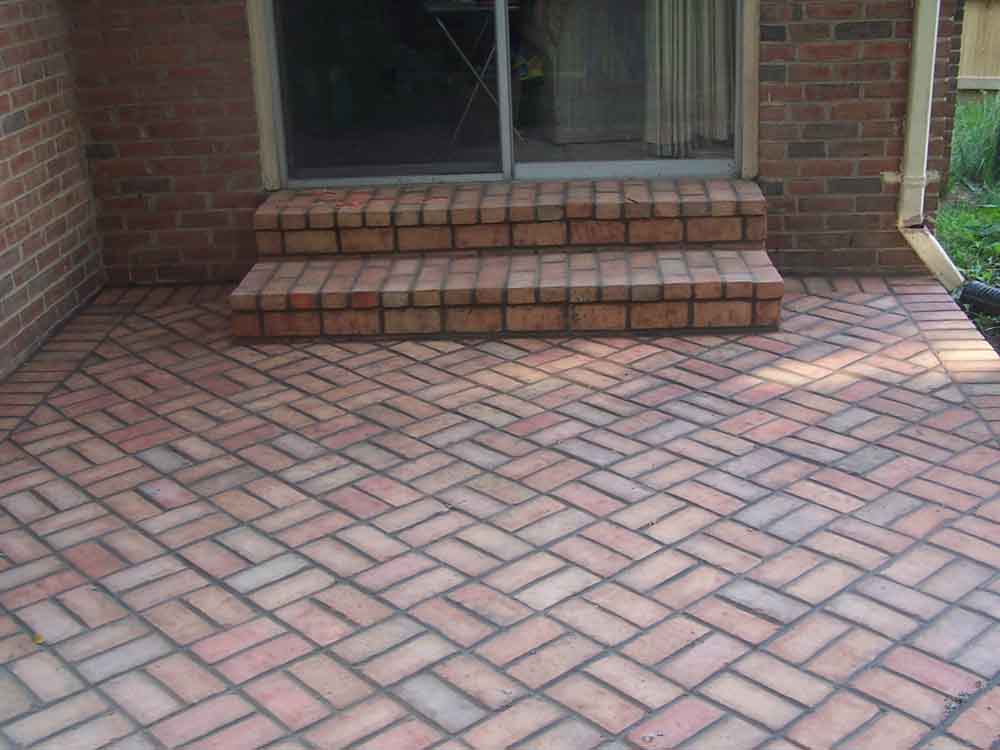 Brick patios have a distinctive look that cannot be matched by other materials. Whether your home has brick in its design or not, brick walkways and patios add charm, character, and longevity to your outside space. There are many benefits of brick patios:
Brick patios have a distinctive look that cannot be matched by other materials. Whether your home has brick in its design or not, brick walkways and patios add charm, character, and longevity to your outside space. There are many benefits of brick patios:
- Color integrity – never fades
- Easy repairs – for dry laid brick
- Authentic – quality look
- Durable – will last for years
- Customizable – many pattern options
- Cost effective – depending on the pattern, installation can be done yourself
Whether your patio is installed over a bed of sand and gravel or over a concrete slab, brick can be arranged in many unique patterns.
A brick patio can be designed in just about any shape. Common shapes include squares, rectangles, circles and freeform curves. The more complicated the shape of your patio the more difficult the installation will be, making the process take more time and cost more money. However, simple patterns can easily be installed by the homeowner with a little planning and preparation.
Depending on the shape of your patio and the brick pattern you select you can make a patio appear formal or casual. Try creating a checkerboard pattern by using two different brick colors. For a slightly more intricate look, alternate two bricks laid lengthwise with two bricks laid widthwise. This is very simple to do, but looks difficult. If the checkerboard look doesn’t interest you, you can create a brick patio using one of the other traditional designs, such as the running bond, the herringbone, or the basket weave.
Brick can be used in conjunction with other paving materials to create a unique patio.
Materials for a brick patio are very affordable. Expect to pay $2-3 per square foot for the bricks, plus installation. Depending on the type of brick you select and the pattern used to lay it, the overall cost for materials and labor should fall between $12 and $25 per square foot.
There are two installation methods for a brick patio: dry laid and mortared. A dry laid patio is supported by a base of compacted gravel and sand, while a mortared patio is set on a concrete slab. Keep in mind that for a patio, it is important that the bricks be laid level. If they are uneven, furniture will rock and wobble.








